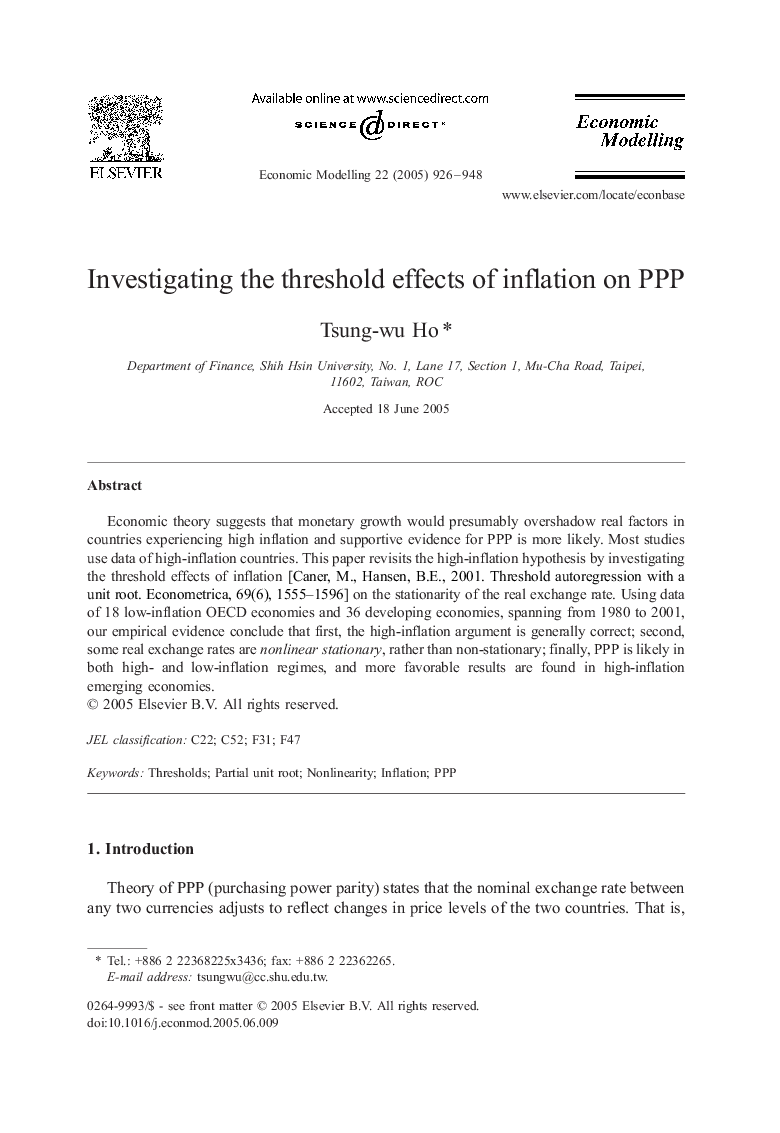| Article ID | Journal | Published Year | Pages | File Type |
|---|---|---|---|---|
| 9548664 | Economic Modelling | 2005 | 23 Pages |
Abstract
Economic theory suggests that monetary growth would presumably overshadow real factors in countries experiencing high inflation and supportive evidence for PPP is more likely. Most studies use data of high-inflation countries. This paper revisits the high-inflation hypothesis by investigating the threshold effects of inflation [Caner, M., Hansen, B.E., 2001. Threshold autoregression with a unit root. Econometrica, 69(6), 1555-1596] on the stationarity of the real exchange rate. Using data of 18 low-inflation OECD economies and 36 developing economies, spanning from 1980 to 2001, our empirical evidence conclude that first, the high-inflation argument is generally correct; second, some real exchange rates are nonlinear stationary, rather than non-stationary; finally, PPP is likely in both high- and low-inflation regimes, and more favorable results are found in high-inflation emerging economies.
Related Topics
Social Sciences and Humanities
Economics, Econometrics and Finance
Economics and Econometrics
Authors
Tsung-wu Ho,
